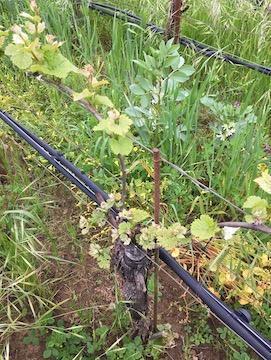2019 so far

|
As a student of winemaking and grape growing, I find great satisfaction in studying the growing season and how it shapes the way the vines, and ultimately, the wines, behave. While one can't control the weather, one can study how the vines respond to it. It's a combination of science and close observation; more is known about how plants respond to the environment every year. It's not a matter of controlling it, but appreciating it and adjusting your farming and winemaking techniques, as well as your expectations, accordingly. For example: the winter of 2018-2019 has been pretty wet (although not as wet as 2016-2017) with some flooding (bad in parts of the north coast, mild in other parts). The timing of the rain was late, with the worst of the storms coming in the late winter and early spring. This left the soil wet and cold unusually late into the year, which delayed bud break. Obviously nothing can be done about the weather but now we have some clues into what kind of year we'll have: a later harvest than normal, high early season vigor, potentially large berries. It seems likely that there will be less water and nutrient stress than during the drought years, since the soils have been moist most of the winter, and wet soil in the winter is good for soil microbes and fungi. Both play an important role in making soil nutrients available to the plants. Sometimes a wet winter can, somewhat counter-intuitively, lead to more water stress late in the season because the plants grow larger. More vegetative growth and more leaves equals more demand for water. If the season gets hot and dry, especially late in the year, this can be hard on the plants. That’s what happened in 2017. It’s also why the wildfire season was so bad in 2017—there was a lot of fuel that grew early in the year, when the ground was wet. In the fall when it had died and/or dried out, there was a lot of stuff to burn. Folks are expecting the same thing to happen this year. Of course, much depends upon the kind of summer and fall we have. Hopefully not quite so hot and dry as in 2017! The generally cool weather so far this spring impacts not only this growing season, but also has the potential to reduce the fruitfulness of the buds that will grow in 2020 as well, meaning that there may be fewer clusters per bud next year. Buds that form in cold weather generally don't have as many potential clusters. In many vineyards I would not be surprised to find fewer clusters overall next year than the last couple of years. Things are only getting started. From now on into the season, I'll be paying a lot of attention to soil moisture, the weather and how the vines are growing. It may sound a bit dry and academic but I find it fascinating to study the season and how it translates into the wines!
<<
previous
|
next
>>
|